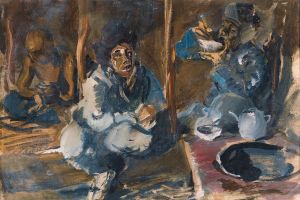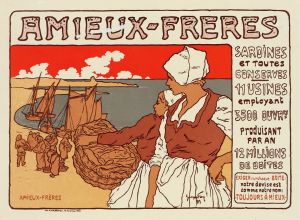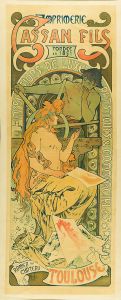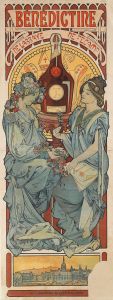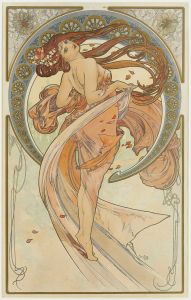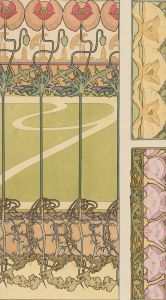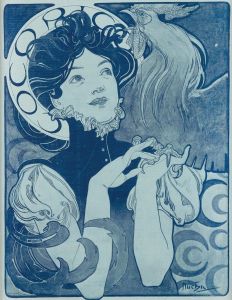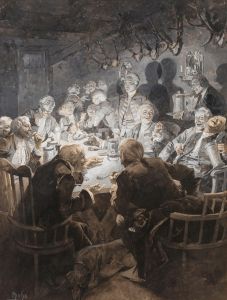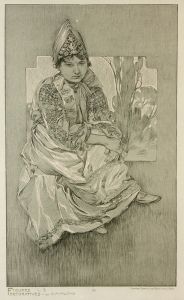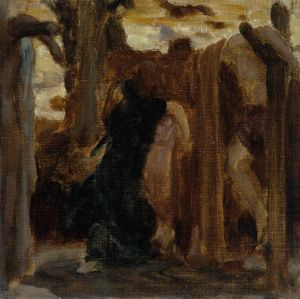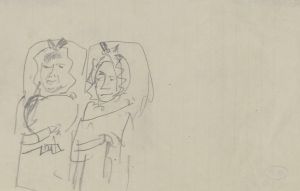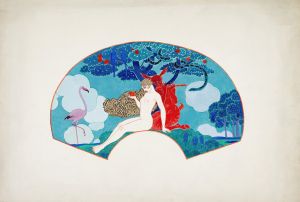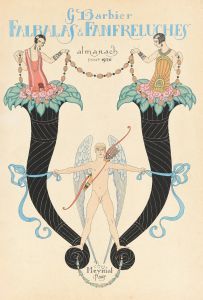
Lygie
A hand-painted replica of Alphonse Mucha’s masterpiece Lygie, meticulously crafted by professional artists to capture the true essence of the original. Each piece is created with museum-quality canvas and rare mineral pigments, carefully painted by experienced artists with delicate brushstrokes and rich, layered colors to perfectly recreate the texture of the original artwork. Unlike machine-printed reproductions, this hand-painted version brings the painting to life, infused with the artist’s emotions and skill in every stroke. Whether for personal collection or home decoration, it instantly elevates the artistic atmosphere of any space.
Alphonse Mucha, a Czech painter and decorative artist, is renowned for his distinctive style that became synonymous with the Art Nouveau movement. One of his notable works is "Lygie," a piece that exemplifies his artistic vision and mastery of the decorative arts. Mucha's work is characterized by its intricate detail, flowing lines, and harmonious composition, all of which are evident in "Lygie."
"Lygie" was created during a period when Mucha was deeply involved in producing posters, illustrations, and designs that captured the essence of the Art Nouveau style. This movement, which flourished from the late 19th century to the early 20th century, emphasized organic forms, curvilinear shapes, and a sense of harmony with nature. Mucha's work often featured beautiful women surrounded by lush, decorative elements, and "Lygie" is no exception.
The painting "Lygie" showcases Mucha's ability to blend fine art with commercial appeal. Mucha often used his art to create posters and advertisements, and his works were widely appreciated for their aesthetic beauty and commercial effectiveness. In "Lygie," Mucha employs his signature style of using soft, flowing lines and a pastel color palette to create a sense of elegance and grace. The subject of the painting is depicted with an ethereal quality, surrounded by intricate patterns and floral motifs that are hallmarks of Mucha's work.
Mucha's influence extended beyond the realm of fine art into various aspects of design, including jewelry, furniture, and interior decoration. His work on "Lygie" and other pieces contributed to the popularization of the Art Nouveau style across Europe and beyond. Mucha's art was not only visually appealing but also accessible, as he often produced lithographs and prints that allowed a wider audience to enjoy his work.
The cultural and historical context of Mucha's work is significant. Born in 1860 in what is now the Czech Republic, Mucha moved to Paris in the late 19th century, where he became involved with the burgeoning Art Nouveau movement. His work gained international acclaim, and he became one of the most prominent artists of his time. Mucha's art was not only a reflection of the aesthetic trends of the period but also a response to the social and cultural changes occurring at the turn of the century.
"Lygie," like many of Mucha's works, embodies the ideals of beauty, harmony, and nature that were central to the Art Nouveau movement. The painting's intricate details and flowing composition are a testament to Mucha's skill as an artist and his ability to capture the spirit of his time. Today, Mucha's work continues to be celebrated for its artistic innovation and its contribution to the development of modern art.
In summary, "Lygie" by Alphonse Mucha is a quintessential example of the Art Nouveau style, showcasing the artist's talent for creating visually stunning and culturally significant works. Through his use of elegant lines, decorative elements, and a harmonious color palette, Mucha created a piece that remains admired for its beauty and artistic significance.





